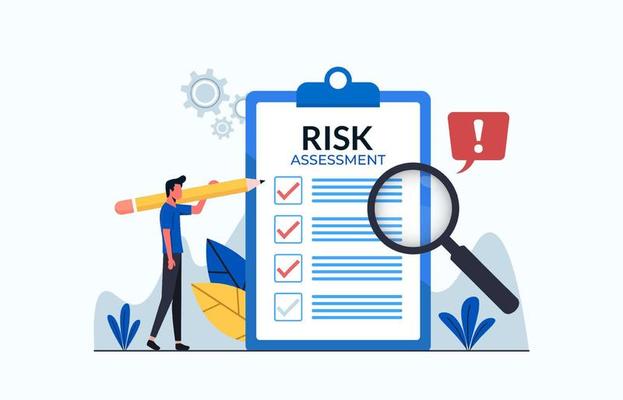When it comes to running a business in highly regulated industries, understanding risk is essential. Every decision, from operations to compliance, carries some level of risk. Risk assessment is a proactive measure that identifies, evaluates, and addresses risks before they become costly problems.
Advanced risk assessment tools and strategies have enabled businesses to assess, monitor, and mitigate risks more effectively. A thorough risk assessment enables businesses to stay prepared, allowing them to manage risks in a controlled manner. This blog explores what a comprehensive risk assessment should cover, so you can be better equipped to protect your business.
What is Risk Assessment?
Risk assessment is the process of identifying potential risks in your business, evaluating their impact, and determining the steps needed to manage or mitigate them. This assessment aims to identify risks in various areas, including financial, operational, reputational, and regulatory. Without conducting a thorough risk assessment, businesses may miss vulnerabilities that could lead to operational disruptions or regulatory penalties.
The purpose of risk assessment is to ensure that potential risks are not overlooked. By understanding what risks your business faces, you can take proactive measures to protect yourself. The process is vital for companies in all industries, but is particularly crucial in sectors such as fintech, crypto, and banking, where regulations are strict and non-compliance can result in severe consequences.
Types of Risks Your Assessment Should Cover
To conduct a robust risk assessment, it is essential to understand the various types of risks that could impact your business.
- Financial Risks: Financial risks can come from multiple sources, including market fluctuations, credit risks, or liquidity issues. These risks could directly affect your profitability, investor confidence, and ability to secure loans.
- Regulatory Risks: In industries like fintech and crypto, regulations are constantly changing. Non-compliance may result in severe penalties, legal consequences, or the loss of licenses. Keeping up with regulations and understanding your obligations is vital.
- Operational Risks: Operational risks arise from internal processes, systems, or external factors, such as supply chain disruptions. These risks affect your business’s ability to function smoothly and deliver services on time.
- Reputational Risks: Reputation is everything in business. A single mishandled situation can cause lasting damage to a company’s brand and customer trust. Identifying and managing reputational risks is critical for maintaining customer loyalty and securing future opportunities.
Steps to Conduct a Comprehensive Risk Assessment
Performing a risk assessment is a systematic process. Below are the essential steps to follow for conducting an in-depth evaluation:
1. Risk Identification
Identifying risks is the first and most crucial step in the risk assessment process. This involves systematically recognizing potential hazards that could negatively impact your business objectives. Effective risk identification requires a thorough understanding of your business operations, environment, and the external factors that could pose threats.
- Methods of Identification: Utilize various techniques such as brainstorming sessions, historical data analysis, expert consultations, and scenario planning to uncover potential risks.
- Sources of Risks: Consider both internal sources (e.g., operational processes, employee actions) and external sources (e.g., market fluctuations, regulatory changes) that could introduce risks.
By proactively identifying risks, organizations can develop strategies to manage or mitigate them before they materialize.
2. Risk Analysis
Once risks are identified, the next step is to analyze their nature and potential impact. Risk analysis involves assessing the likelihood of each risk occurring and the severity of its consequences.
- Qualitative Analysis: This approach uses descriptive terms to assess risks, such as high, medium, or low likelihood and impact. It’s particularly useful when quantitative data is scarce.
- Quantitative Analysis: Involves numerical methods to estimate risk probabilities and impacts, providing a more precise assessment. Techniques include statistical models and simulations.
Effective risk analysis enables organizations to prioritize risks based on their potential impact and likelihood, guiding resource allocation for mitigation efforts.
3. Risk Evaluation
Risk evaluation compares the results of the risk analysis against risk criteria to determine whether a risk is acceptable or requires treatment. This step helps in deciding which risks need to be addressed and to what extent.
- Risk Appetite and Tolerance: Understand your business capacity to bear risk without adversely affecting its objectives. Risks that fall within acceptable levels may not require immediate action.
- Prioritization: Rank risks based on their significance to focus on those that pose the greatest threat to the organization.
By evaluating risks, organizations can make informed decisions about which risks to mitigate, transfer, accept, or avoid.
4. Risk Treatment
Risk treatment involves selecting and implementing measures to mitigate identified risks. This step is crucial for reducing the potential impact of risks on the organization.
- Risk Avoidance: Altering plans to sidestep potential risks entirely.
- Risk Reduction: Implementing controls to reduce the likelihood or impact of risks.
- Risk Sharing: Transferring the risk to third parties, such as through insurance or outsourcing.
- Risk Retention: Accepting the risk when the costs of mitigation are higher than the potential impact.
Effective risk treatment strategies are tailored to the specific nature of each risk and the business resources.
5. Monitoring and Review
Risk assessment is an ongoing process. Continuous monitoring and regular reviews are essential to ensure that risk management strategies remain effective and relevant.
- Regular Audits: Conduct periodic audits to assess the effectiveness of implemented controls.
- Feedback Mechanisms: Establish channels for reporting new risks or failures in existing controls.
- Adaptation: Be prepared to adjust risk management strategies in response to changes in the internal or external environment.
By maintaining vigilance, organizations can adapt to emerging risks and ensure sustained protection against potential threats.
6. Documentation and Reporting
Proper documentation and reporting are vital for transparency and accountability in the risk assessment process.
- Risk Register: Maintain a comprehensive record of identified risks, their analysis, evaluation, and treatment plans.
- Reporting: Regularly update stakeholders on the status of risk management efforts and any changes in the risk landscape.
Clear documentation and reporting facilitate informed decision-making and demonstrate due diligence in managing risks.
7. Communication and Consultation
Engaging stakeholders throughout the risk assessment process ensures that all perspectives are considered and fosters a culture of risk awareness.
- Stakeholder Involvement: Involve employees, management, and external parties in identifying and assessing risks.
- Clear Communication: Ensure that risk-related information is communicated effectively across all levels of the business.
Effective communication and consultation enhance the business’s ability to manage risks collaboratively and proactively.
Why is Advanced Risk Assessment Crucial for Your Business?
In the digital era, risks are becoming more complex. Advanced risk assessment methods, like data analytics and AI-based tools, can help businesses gain a deeper understanding of potential threats. These advanced techniques enable companies to anticipate and mitigate risks before they escalate, making them a valuable tool for future-proofing your business.
Advanced risk assessments can help businesses:
- Predict emerging risks based on trends and historical data.
- Automate risk evaluations to reduce human error.
- Enhance decision-making by providing actionable insights.
By implementing advanced risk assessment techniques, businesses can stay ahead of the competition and safeguard themselves against unforeseen challenges.
Common Challenges in Risk Assessment
Despite its importance, many businesses face challenges in conducting an effective risk assessment. Below are some common hurdles companies may encounter:
- Lack of Resources: Conducting a thorough risk assessment requires time, expertise, and resources. Smaller businesses or those with limited budgets may struggle to allocate the necessary resources.
- Inadequate Data: Risk assessment relies heavily on data. Without accurate and complete data, your risk evaluation will be incomplete, leading to gaps in your risk management strategy.
- Failure to Monitor Risks Continuously: Risk assessment should be an ongoing process. Businesses that only perform assessments periodically may miss emerging risks that develop over time.
Conclusion
A well-rounded risk assessment is a crucial part of business success. It provides a clear view of potential threats, enabling businesses to create effective strategies to mitigate them. From financial risks to regulatory challenges, every business faces a unique set of risks that need to be addressed.
By conducting a thorough and advanced risk assessment, you can ensure your business is well-prepared to face any challenges that may arise. Stay proactive, and remember that risk management isn’t just about identifying problems; it’s about solving them before they happen.





